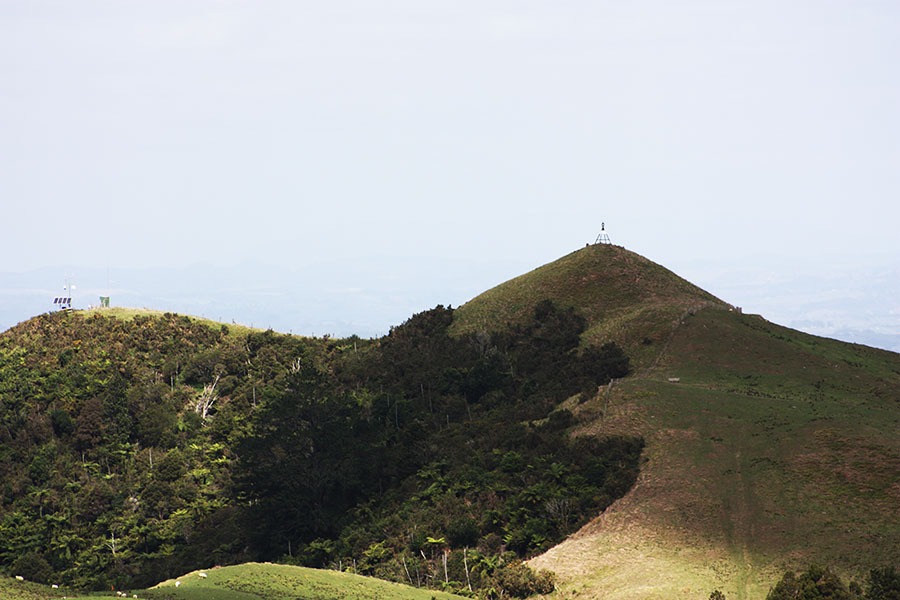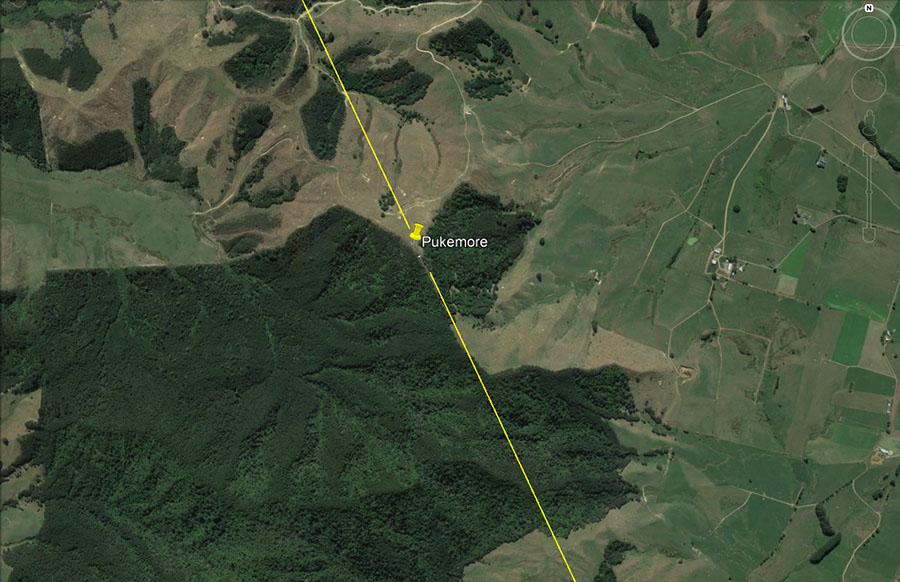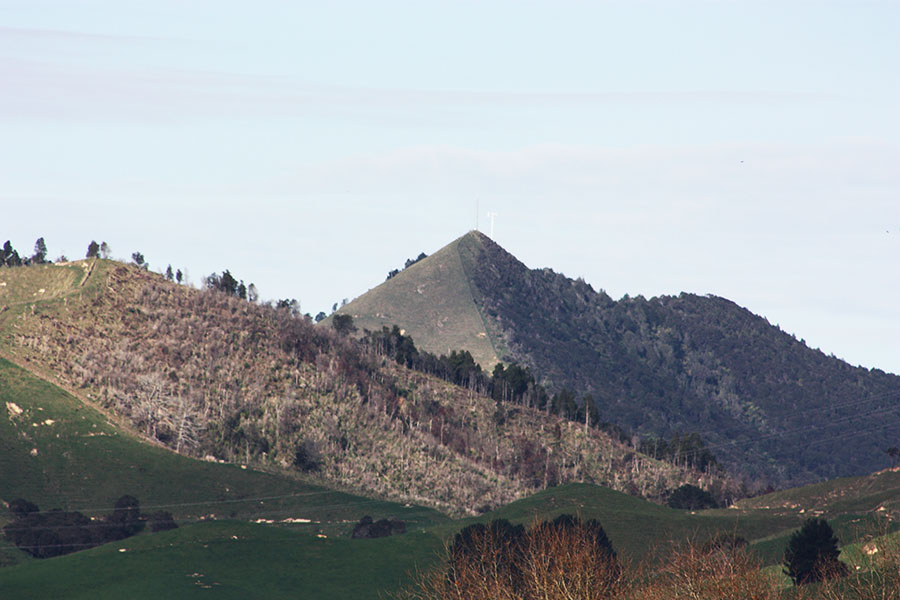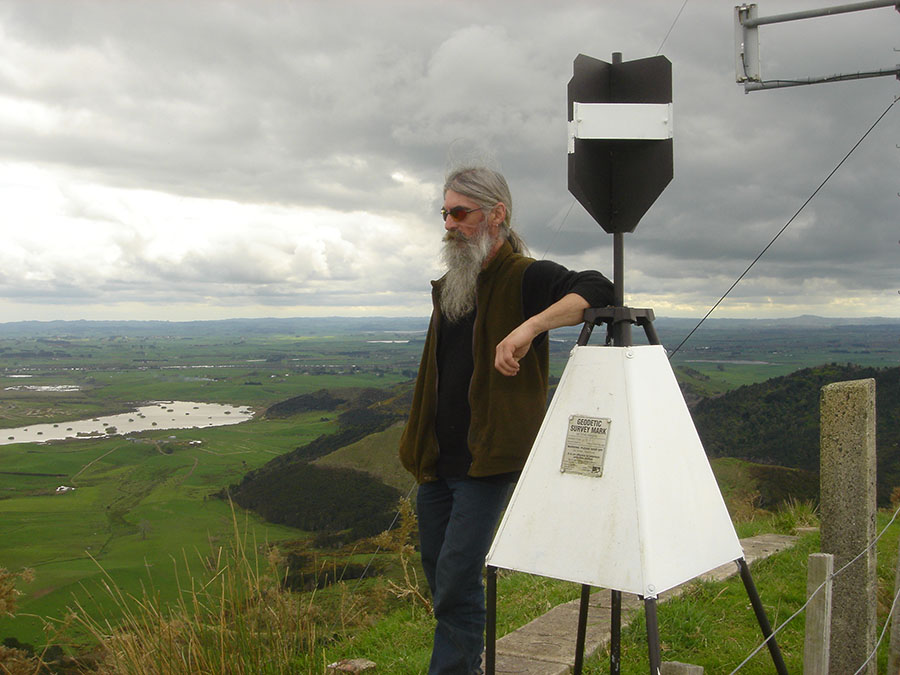

The huge conical mound of Puketutu Hill, which was part of Mt. William’s complex of purpose-erected surveying trigs and markers. Whatever the original, natural configuration of the hill once was, it gives the appearance that many large boulders, mixed with soil, were used to build the mound into this very regular, pointed shape. This lofty mound can be easily seen from the opposite side of the 25-mile wide Waikato Valley.

Part way up the mound this incised boulder is found. It appears to be an ancient equivalent to a “Gypsy Map”, showing the wayfarer tracks and routes to places and resources in the immediate region.

A large portion of the upper section of the Puketutu mound, all the way to the summit, looks like a piled up mixture of large & small boulders encased in packed earth. The boulders strewn over the summit and elsewhere down the hill look like they’ve been placed there as fill to form a purpose-built structure.
Beyond the trig tower the wide Waikato Valley stretches out southwards, all the way to a high pyramidal-shaped hill called Pukemore, situated near the township of Huntly. Pukemore Hill is the next alignment marker beyond the Mt. William complex, whereas Puketutu Hill, sitting at an elevated, conspicuous position at the northern edge of the Waikato valley, acts as a very visible directional beacon for surveyors located far to the south.

The North Island dissecting alignment running to Taupo now crosses the summit of Pukemore hill, which, like its counterpart, Puketutu Hill, has an unnatural symmetrically shaped upper section and summit.

Pukemore Hill can be seen from many distant locations and, as usual, is crowned with communication towers and a modern-day trig. Maori oral traditions speak of the Patu-paiarehe people living on Pukemore Hill.
One account of their known habitats during the Maori epoch states:
They [the Patu-paiarehe and Turehu] were a tapu [sacred] people and so, when any Maori trespassed on their haunts, they at once deserted that place and established themselves elsewhere. Among the many places said to have been formerly frequented by the Turehu folk are Maungapohatu, Putaihinu, Turi-o-Haua, Mapouriki, Pae-whakataratara, Oparoro and Ngaheni in the Tuhoe district; Tititangiao at Te Hurepo; Kakaramea, Pirongia, Moehau, Kaimanawa, Ngongotaha, Pukemore, Kakepuku, Aroha-auta, Aroha-atai, Tararua and many, many others.

New Zealand researcher, Barry Taylor at the high vantage point of the Pukemore Hill trig, gazing out across the vast Waikato Valley. The views are spectacular through 360-degrees and the majestic, snow-capped mountains of the central volcanic plateau, 115-125 miles distant southwards and sitting adjacent or close to Lake Taupo, are visible from Pukemore in clear weather.